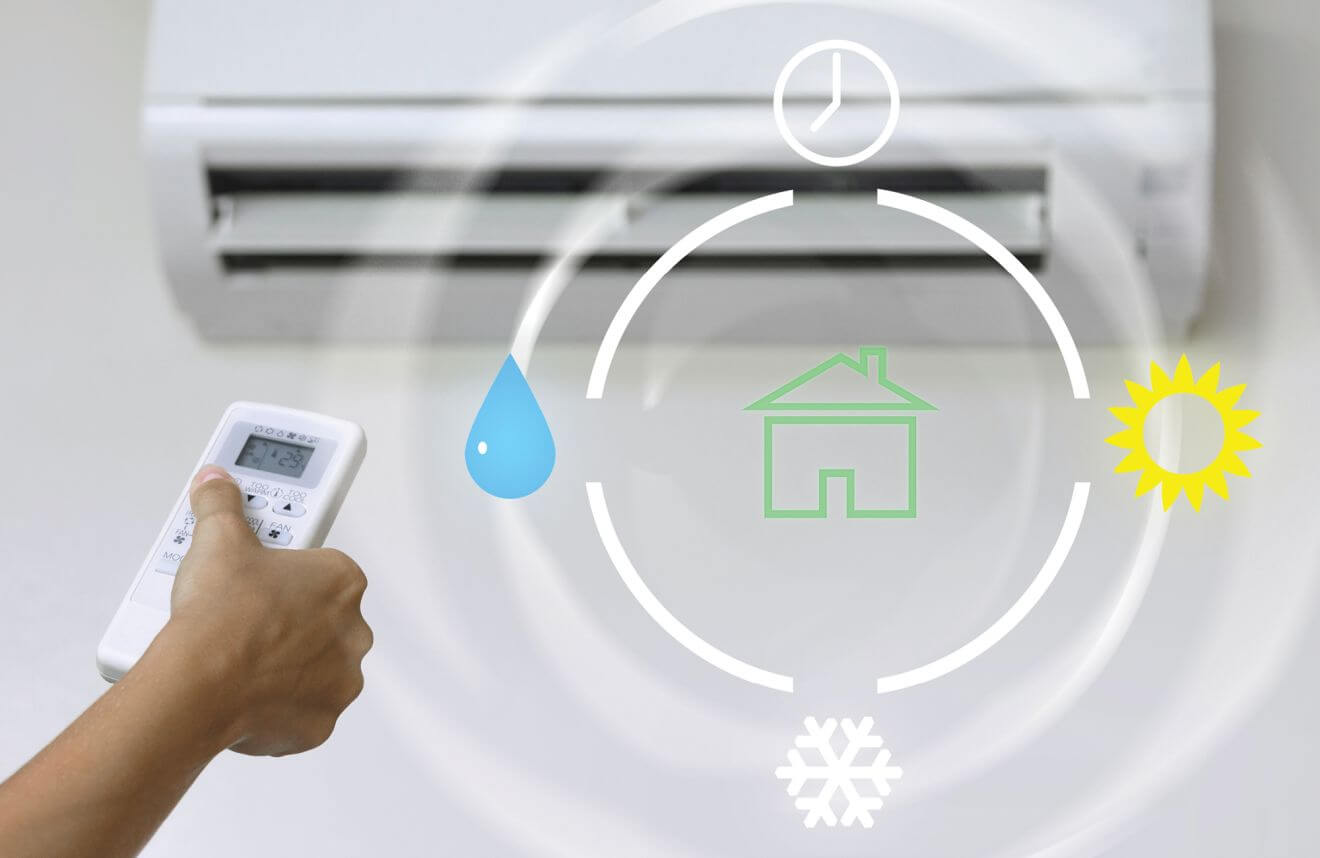
Most current models of air conditioner units boast reverse cycle technology, providing you with the convenience of obtaining cooling and heating from the same appliance. Apart from a few cheap models, most air conditioning units come equipped with cold and hot control modes. This way, if the day turns chilly, you simply need to switch your unit to heat mode and set the thermostat for your preferred temperature.
Reverse cycle AC units are safer, cheaper, and easier to use than the other frequently used option, portable heaters, which are capable of overloading electric circuits.
Reverse Cycle AC: What It Is
Essentially a pair of systems in one machine, reverse cycle AC units are systems that use reverse cycle technology for both cooling and heating your home. When in cooling mode, the unit works as a normal air conditioner. But you can also reverse the refrigeration cycle of the unit, instead providing your home with warmth by using your air conditioner for heating. An added bonus is that these units can also dehumidify and filter your home’s air.
How Reverse Cycle AC Units Work
Reverse cycle AC units do not use energy for the creation of heat. Rather, they pump heat in from the outside air, bringing it inside. They produce heat using an external coil and refrigerant to absorb heat from the outside. This is pumped through a part of the machine called a compressor, then into the condenser of the inside unit. After that, the heat is expelled to shed warmth inside your house.
Before Using Your AC Unit for Heating
First, clean your AC unit. The filters found inside air conditioners are known for collecting dust and nasty particles; these can wind up causing mould or act as a fire hazard once heat is involved. Your owner’s manual will provide you with cleaning directions. Next, select the correct temperature. As a general rule, you should program your AC to maintain a temperature of 18 to 20 degrees Celsius inside your home. For each degree you set the temperature above that range, your energy usage can increase by up to 10%.
Third, turn on the automatic function of your AC unit. Do not simply set the unit to heat mode and then forget about it. This function permits the AC unit to maintain the temperature you desire, keeping the fan running for minimal times at the slowest speeds. This helps you save on energy. Next, remembering that hot air rises, direct the louvers in a downward angle. This ensures optimal air circulation during winter. Remember also to move them back up in summer. Finally, get your AC system serviced. Once a year is the recommended frequency of many manufacturers. This keeps it running as smoothly as possible, maintaining the greatest degree of energy efficiency. This avoids later, costlier repairs.
Types of AC Units
Most new air conditioners these days are models that use reverse cycling to offer heat as well as cooling. However, there are five types of air conditioners that come with this option. One is a split system. This divides into two units; one is mounted inside on a wall, the other is outside. The split system requires no ductwork. It is best suited for heating only several rooms at once. Another split system is the cassette unit. This has the indoor part of the system mounted upon the roof. Sturdier than wall-mounted units, they generally find use in commercial and industrial buildings.
A third split system is a multi-head split system. It gets its name from the fact that it has multiple indoor units connected to a single unit outside. There can be as many as seven indoor units. Better climate control is maintained in individual rooms within your house. A wall system or a window system are both single air conditioning units. All parts are contained in a single box. This box is mounted on a windowsill or to a wall. They are only suitable for cooling or heating one room. Finally, ducted systems work by means of a central indoor unit located in the ceiling. This connects to different ducts located in each room. It has an outdoor unit and is best for adjusting the temperature of an entire home.
Read this complete guide if you have any issue with your unit Air conditioners troubleshooting
Reverse cycle systems have the benefit of being more energy efficient when compared to most other systems that offer heat. For this and other reasons, they are friendlier to the environment. They are extremely easy to use and are capable of heating large rooms, or even your home, with a fair amount of ease. One caveat of an air conditioner for heating is that it can be more expensive to install as well as repair, but this expense is offset by a long lifespan of up to 20 years and low running costs.
Your ClipBoard is currently empty. Please copy row or element before pasting!
